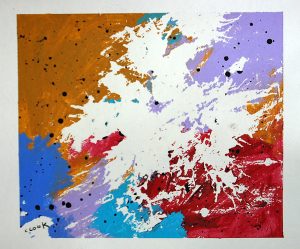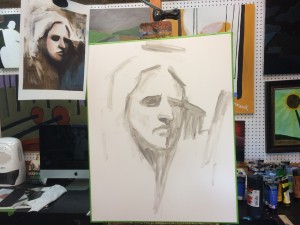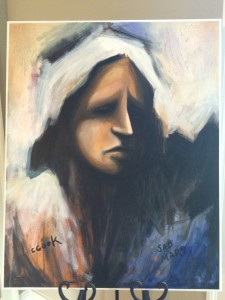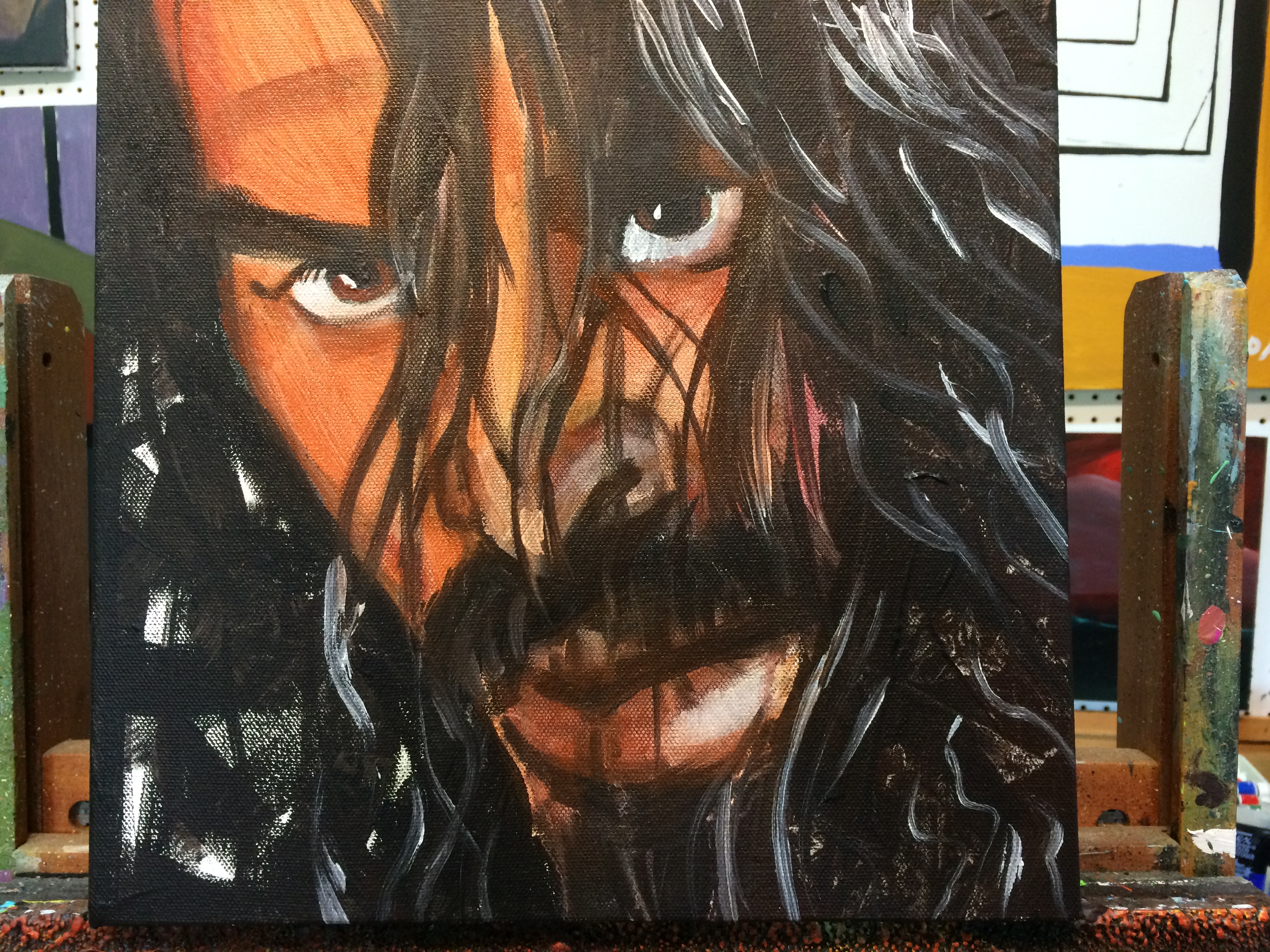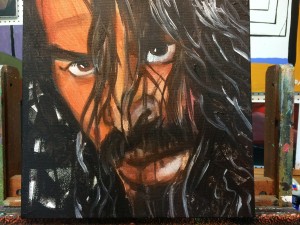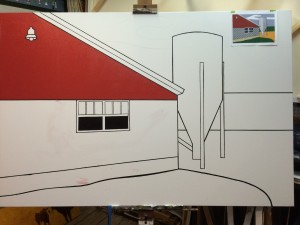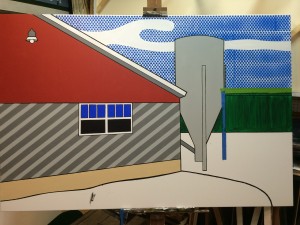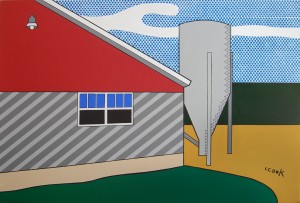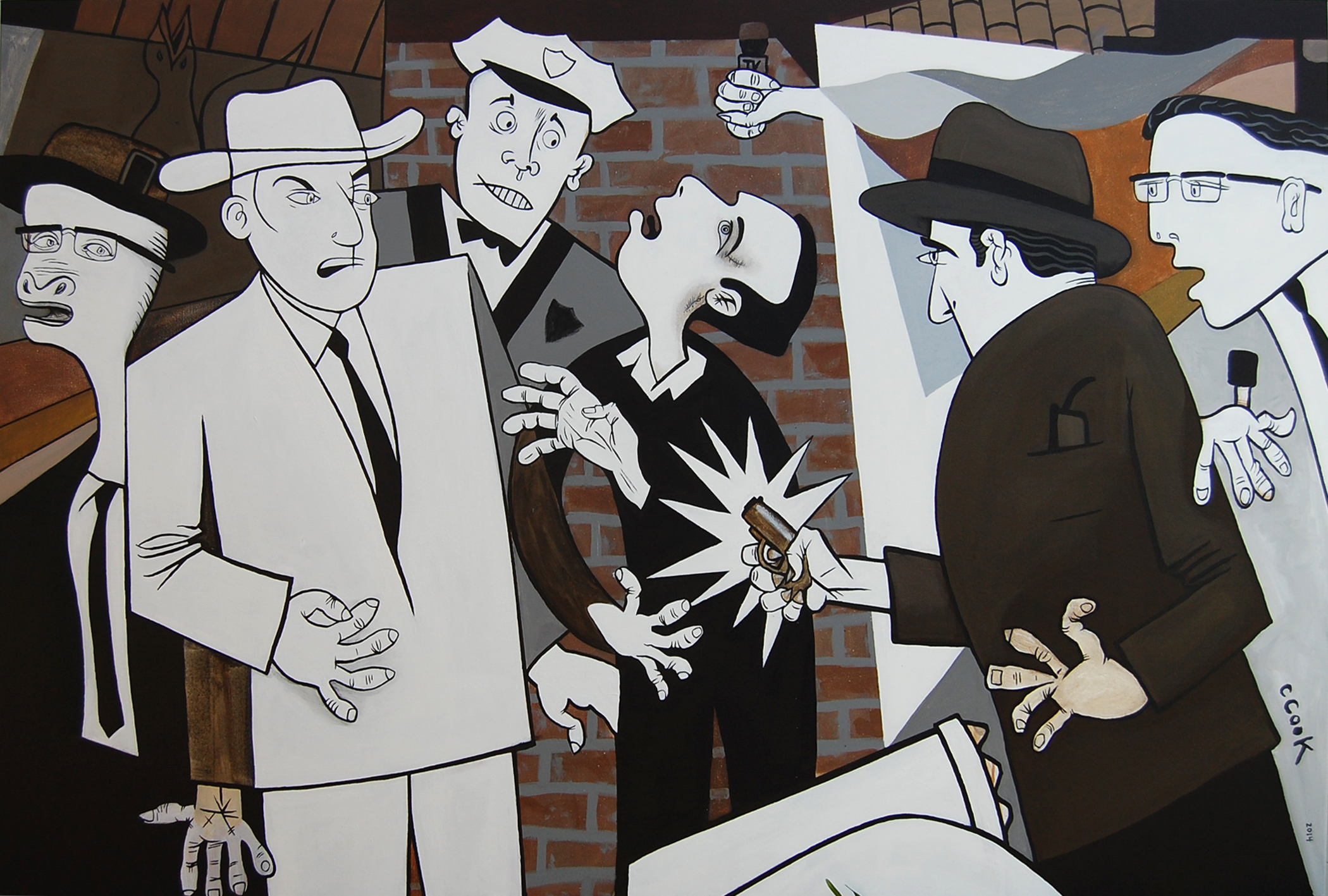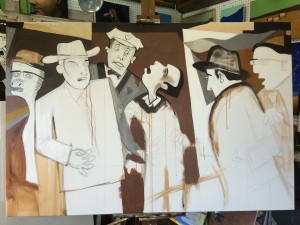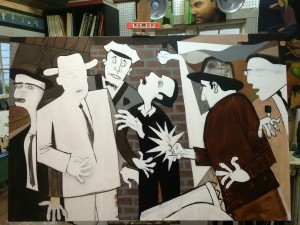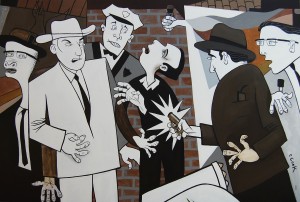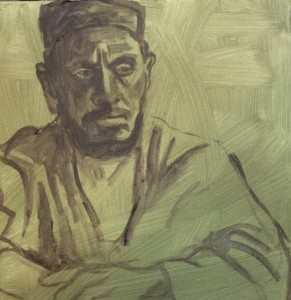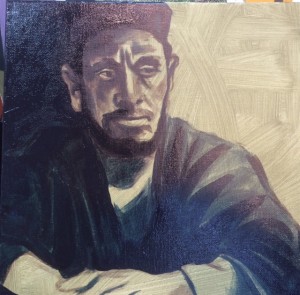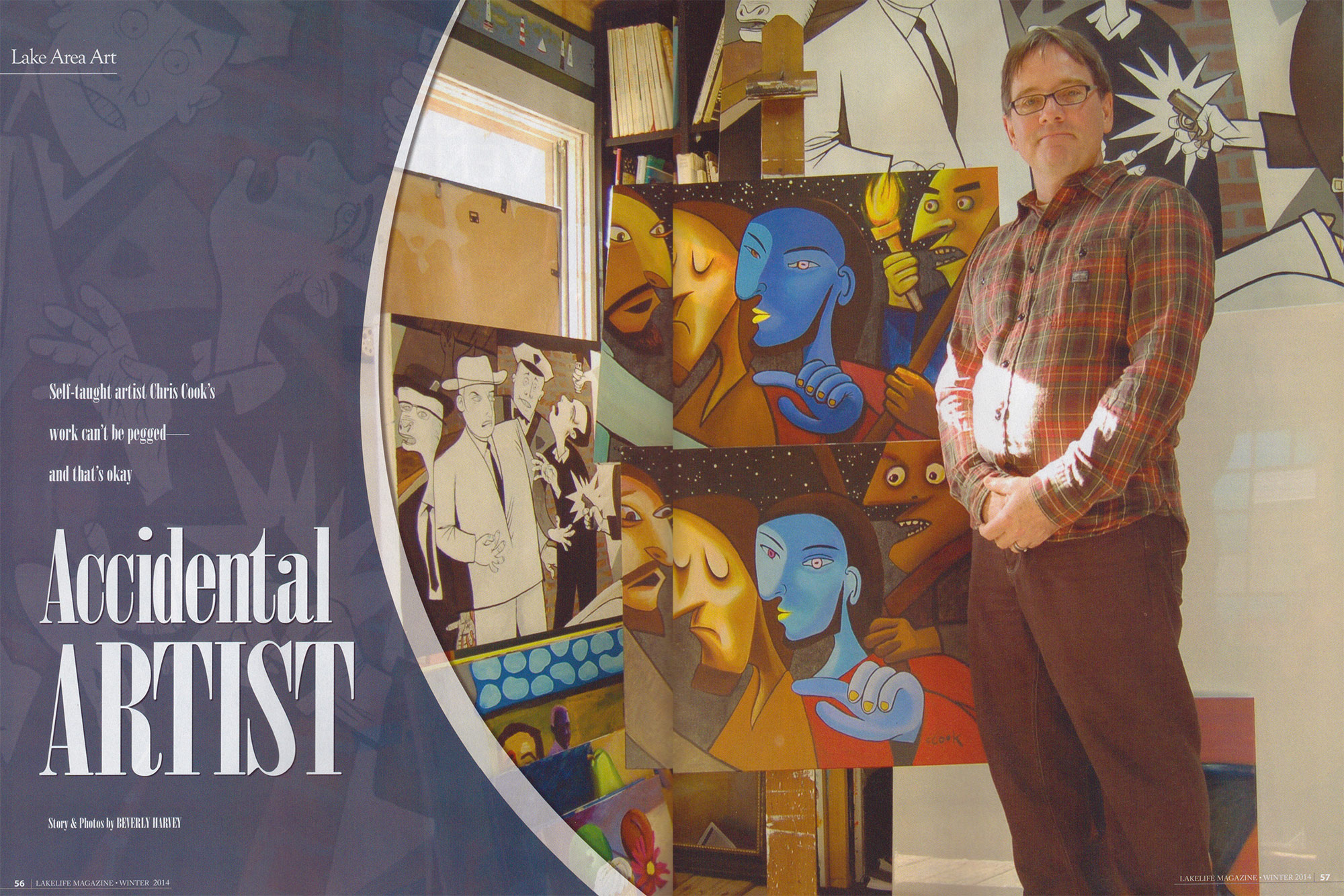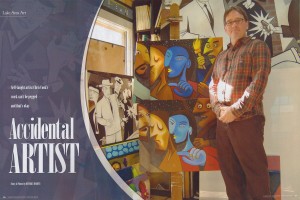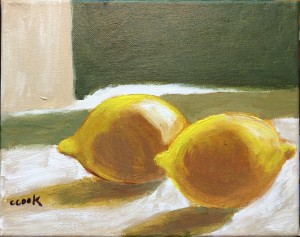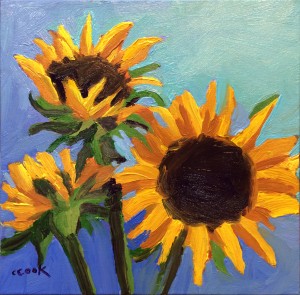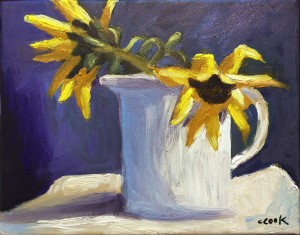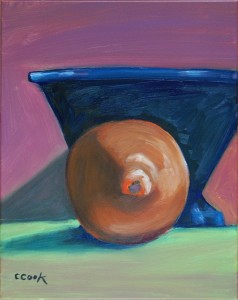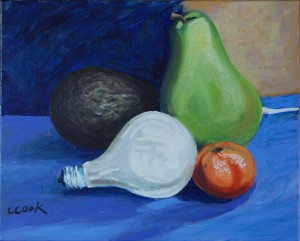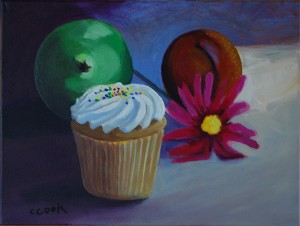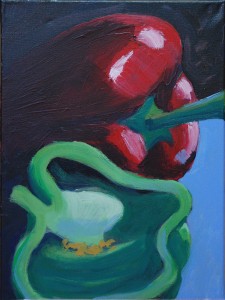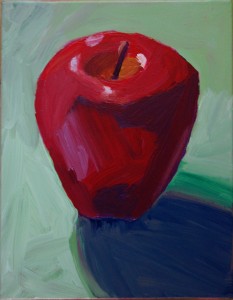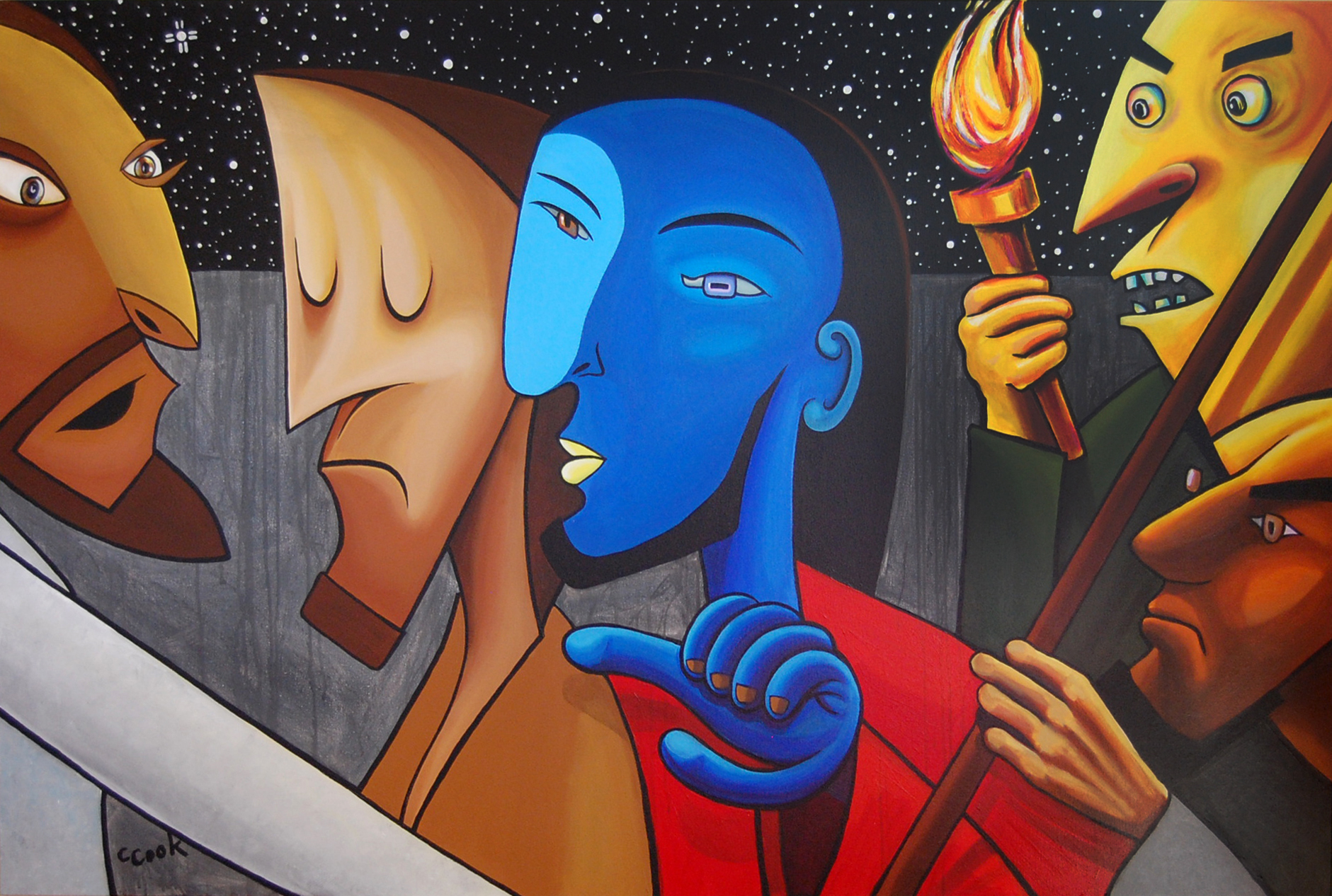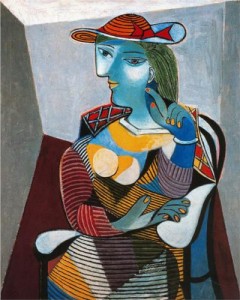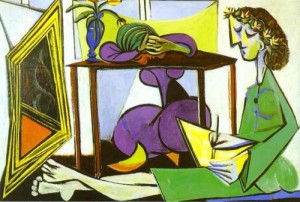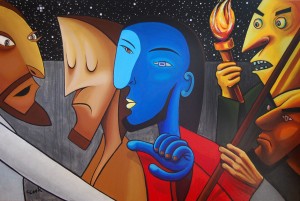Untitled
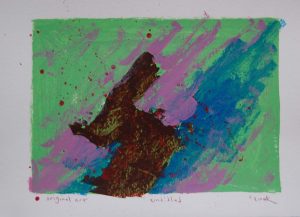 As a kid, the few times painting with my dad in his art studio is one of my fondest memories. My art career was relatively short, but my art style was eerily “similar” to his, or at least that was my goal (This was never accomplished). Our childhoods greatly affect how we experience the world and how we express our creativity. Chris’s father painted houses as a career and Chris would come paint the houses. I am not well versed in the art of painting houses, but I can confidently say that abstraction & creativity are not norms for painting houses in the South. A homeowner would be furious if their house ever looked like this painting with splotches & random colors on it. The homeowner would probably hear complaints from his neighbors, Southern hospitality. I am always curious on how my grandfather’s occupation with purposeful & little abstract painting affected how Chris looks at painting.
As a kid, the few times painting with my dad in his art studio is one of my fondest memories. My art career was relatively short, but my art style was eerily “similar” to his, or at least that was my goal (This was never accomplished). Our childhoods greatly affect how we experience the world and how we express our creativity. Chris’s father painted houses as a career and Chris would come paint the houses. I am not well versed in the art of painting houses, but I can confidently say that abstraction & creativity are not norms for painting houses in the South. A homeowner would be furious if their house ever looked like this painting with splotches & random colors on it. The homeowner would probably hear complaints from his neighbors, Southern hospitality. I am always curious on how my grandfather’s occupation with purposeful & little abstract painting affected how Chris looks at painting.
At first glance, I swore that the brown in this painting was an abstract dog playing in a puddle surrounded by a green landscape. After a little reflection though, I take back that assumption for two reasons. First, I believe that as humans when we see anything, we try to make sense of it. Whenever anyone sees abstract art, they try to put it in a category, try to understand it, instead of just experiencing it. My second reason for taking back the dog assumption is because, quite simply, my dad does not like pets enough to do an abstract painting of one.
Similar to the last painting, there are a mixture of colors clashing together. But even more than that, there are “random” red splotches everywhere on the painting. What convinced Chris to put red splotches on a painting that most would assume does not need any red? Why put more or less red splotches on an abstract painting? Its amazing to see all the creative art expression of Chris, because has hundreds of these small paintings on paper.
Carter Atchison, Student, Wofford College


